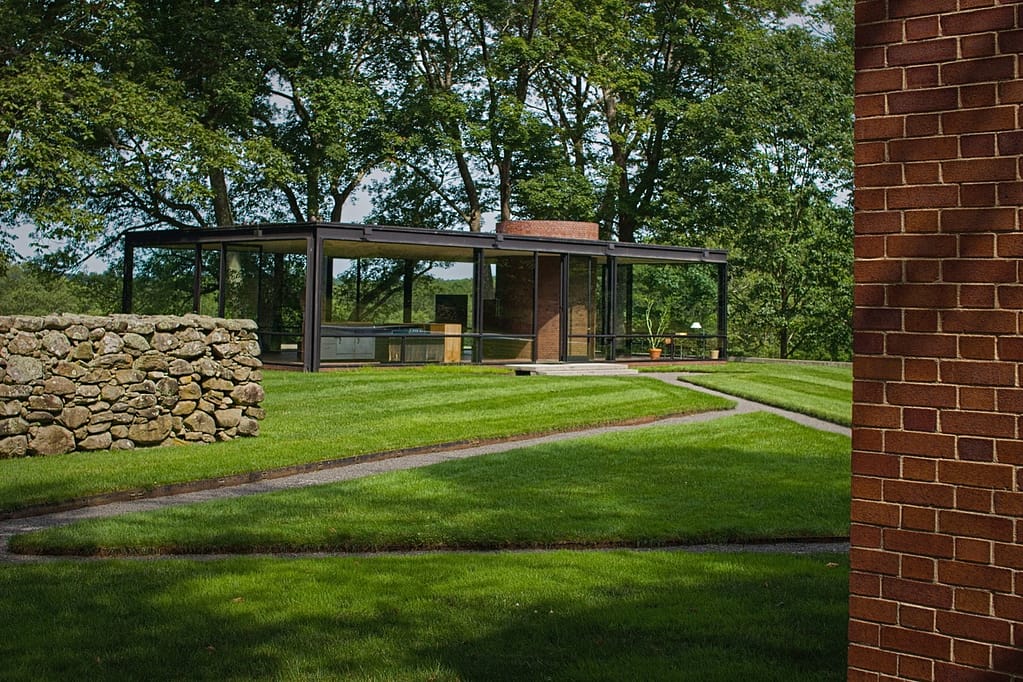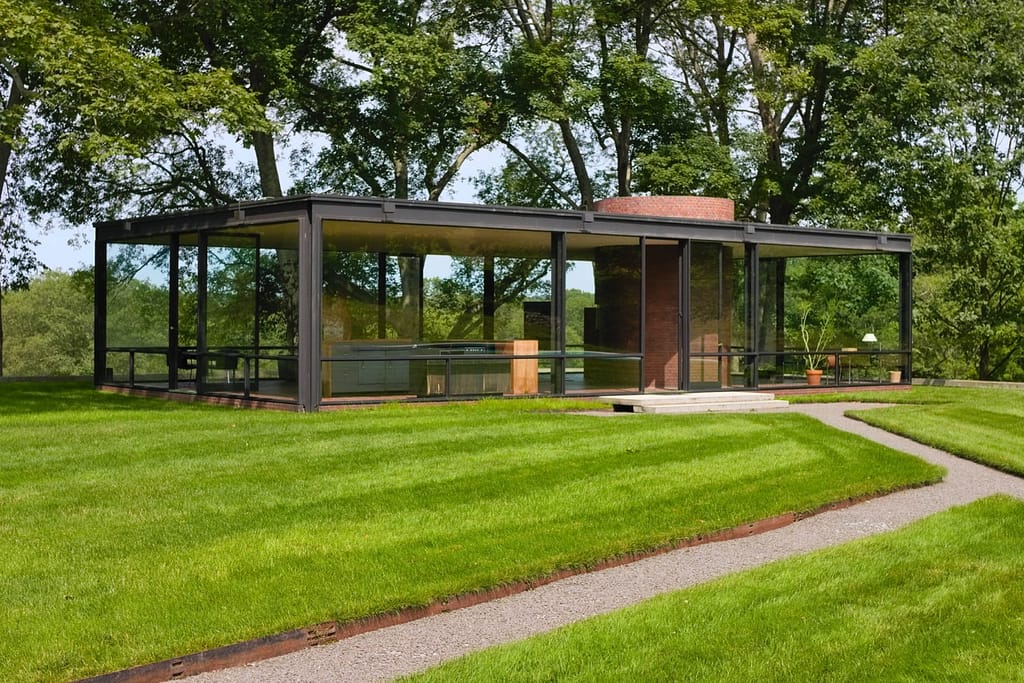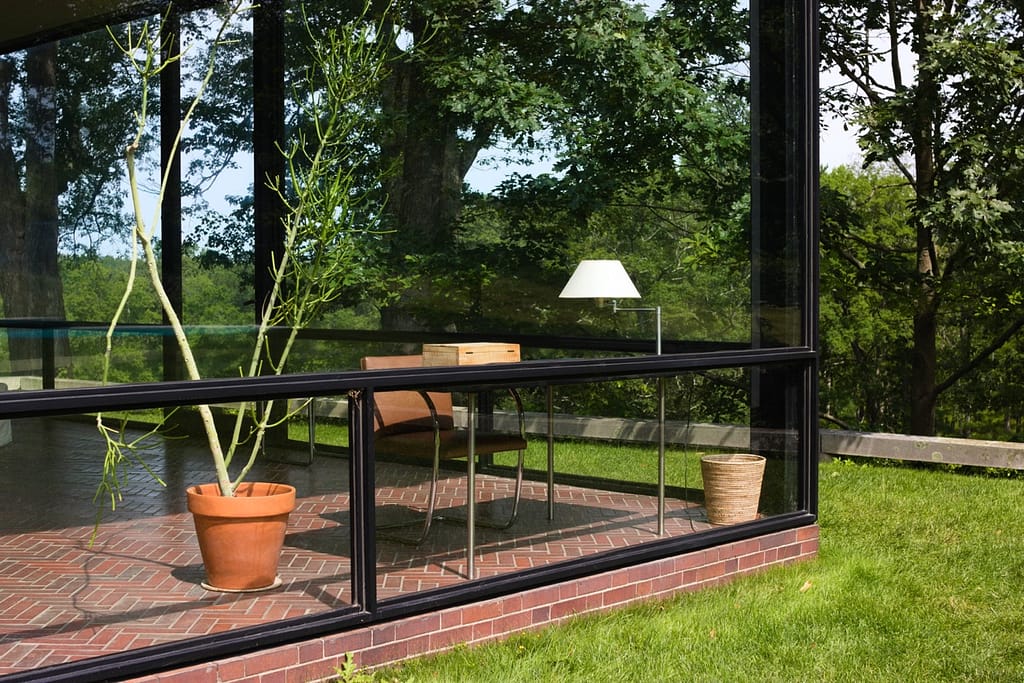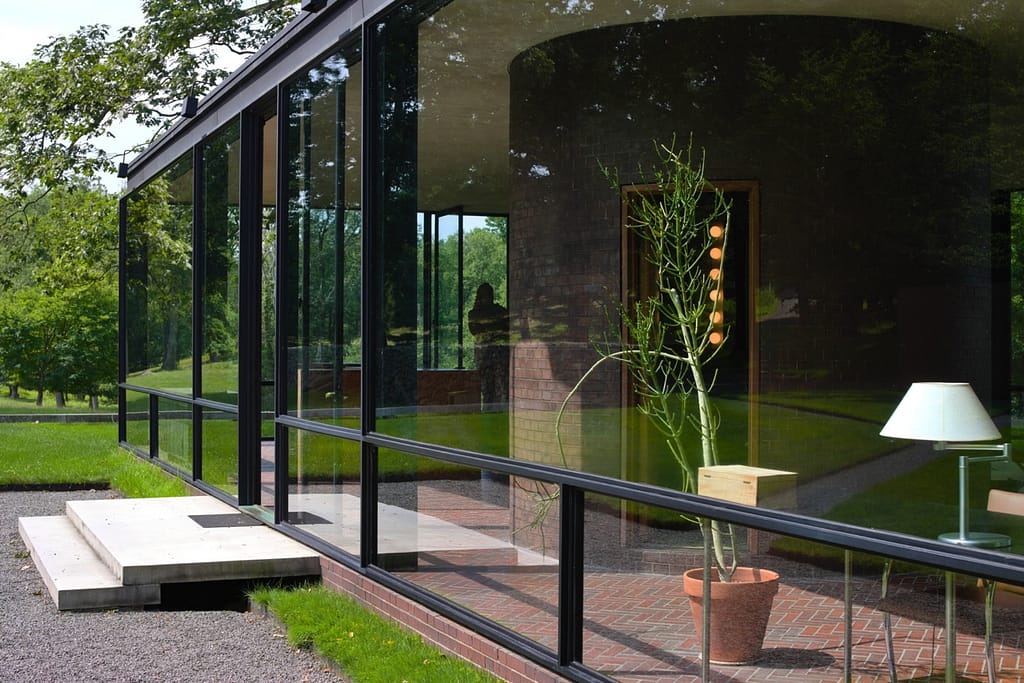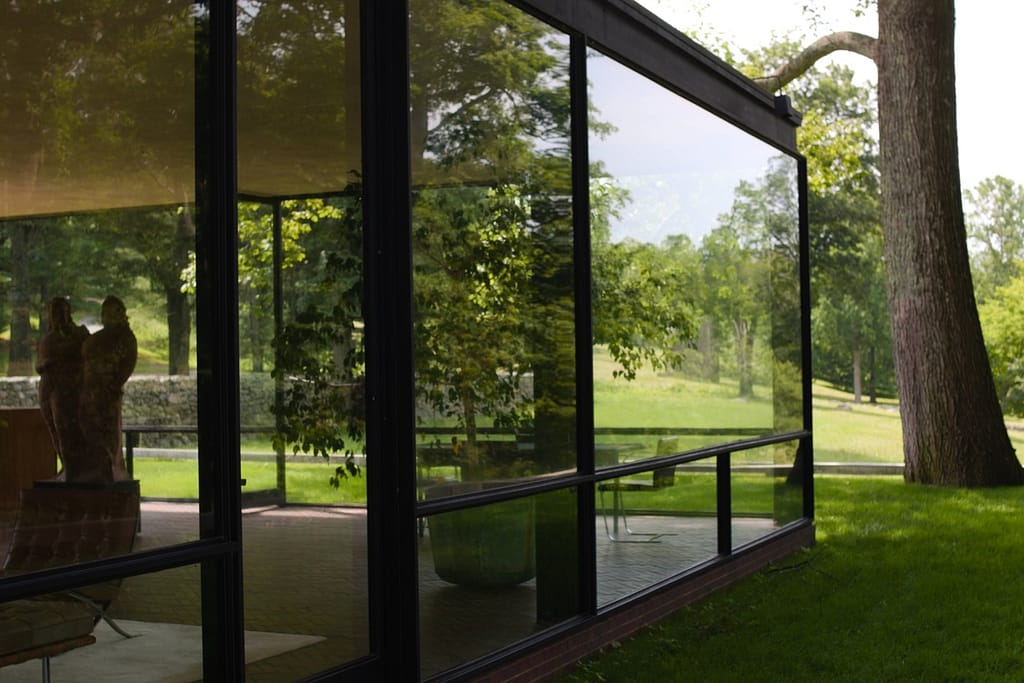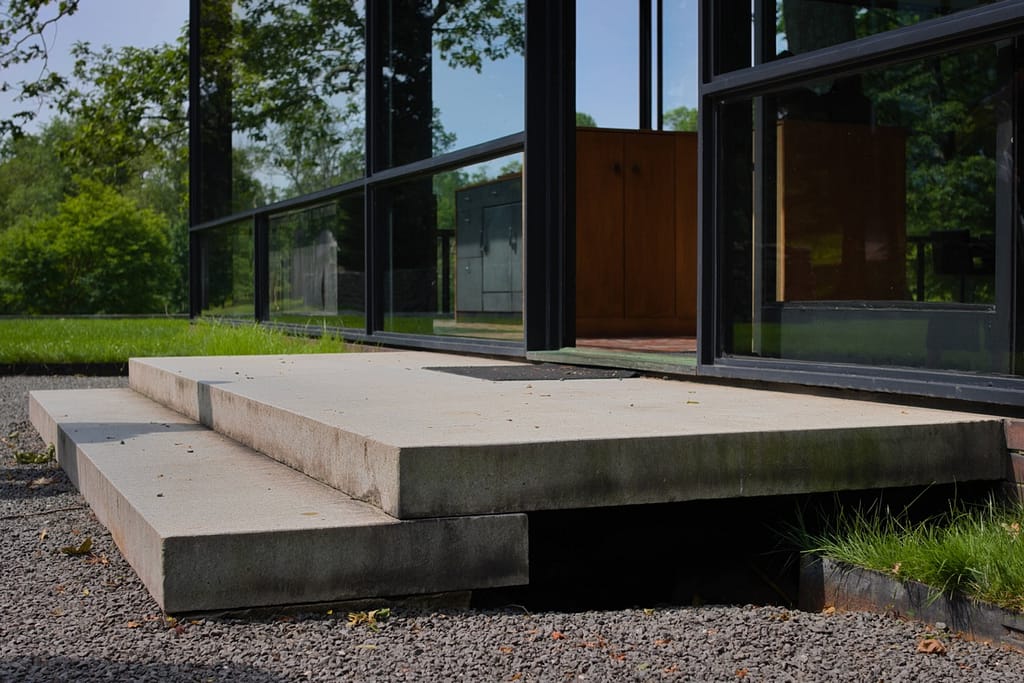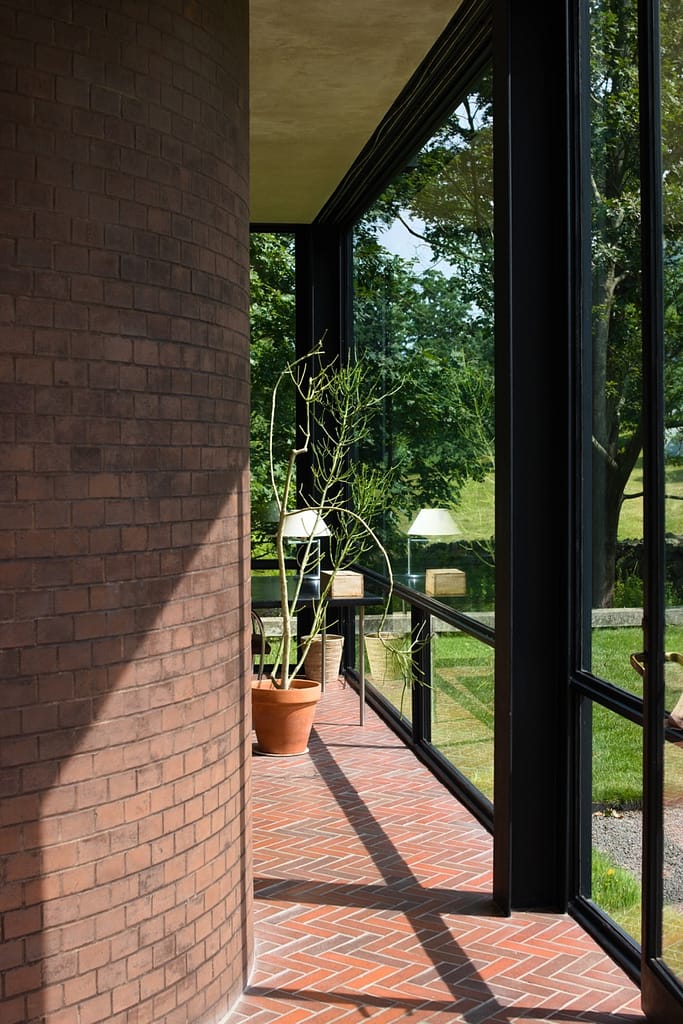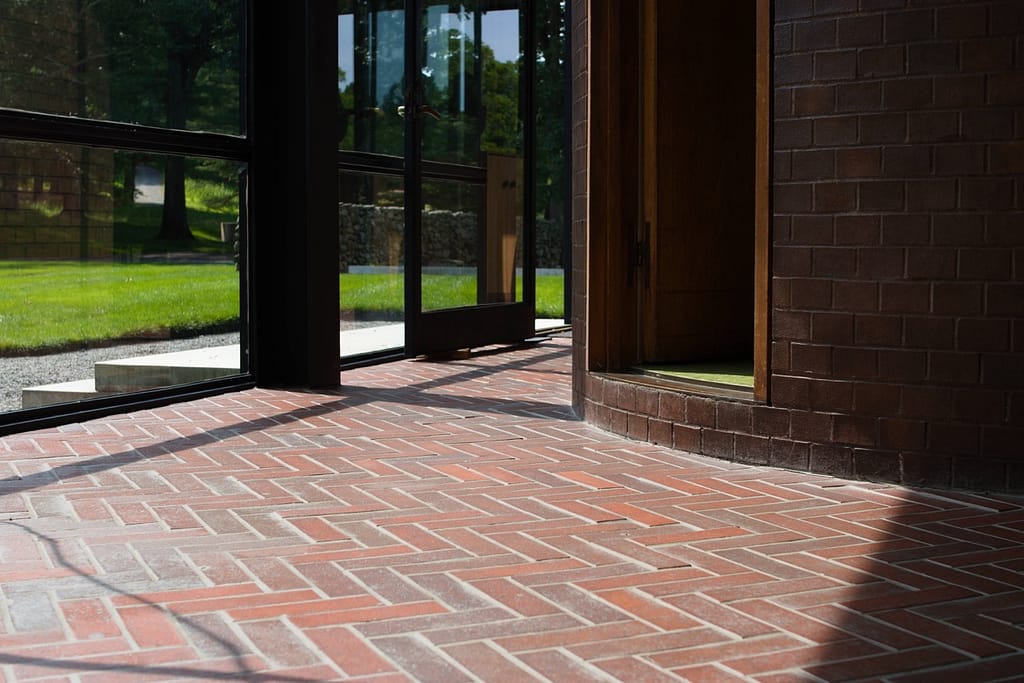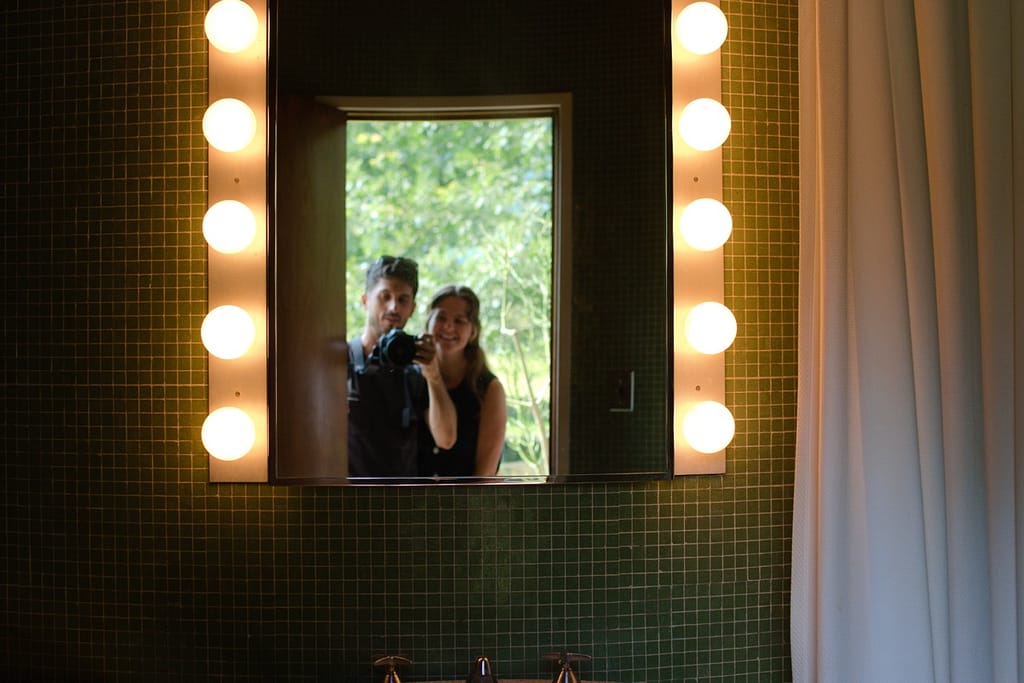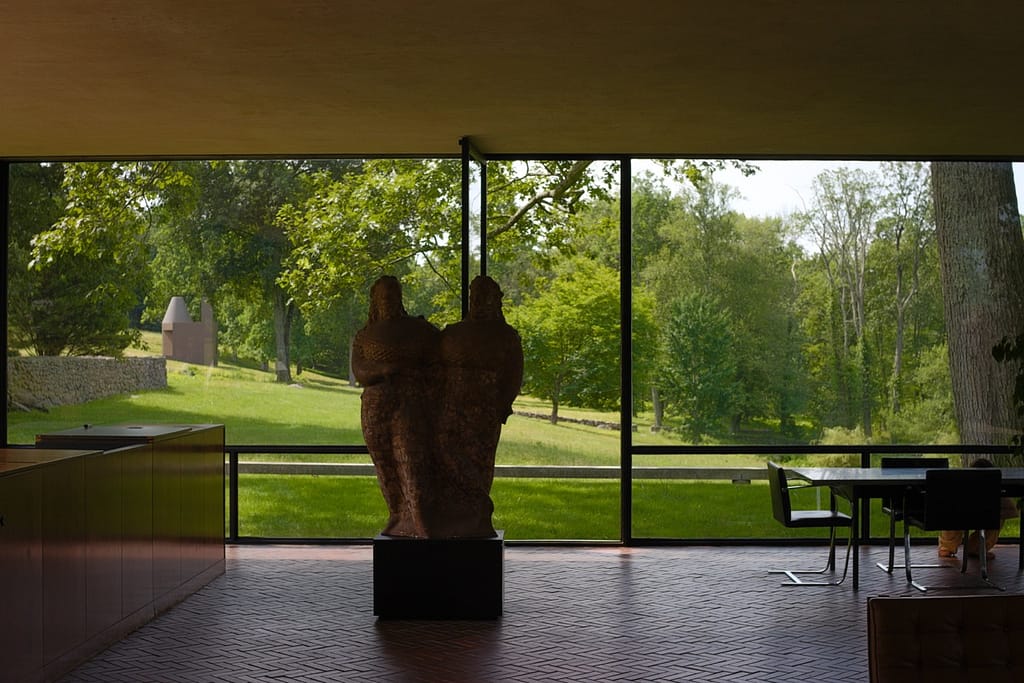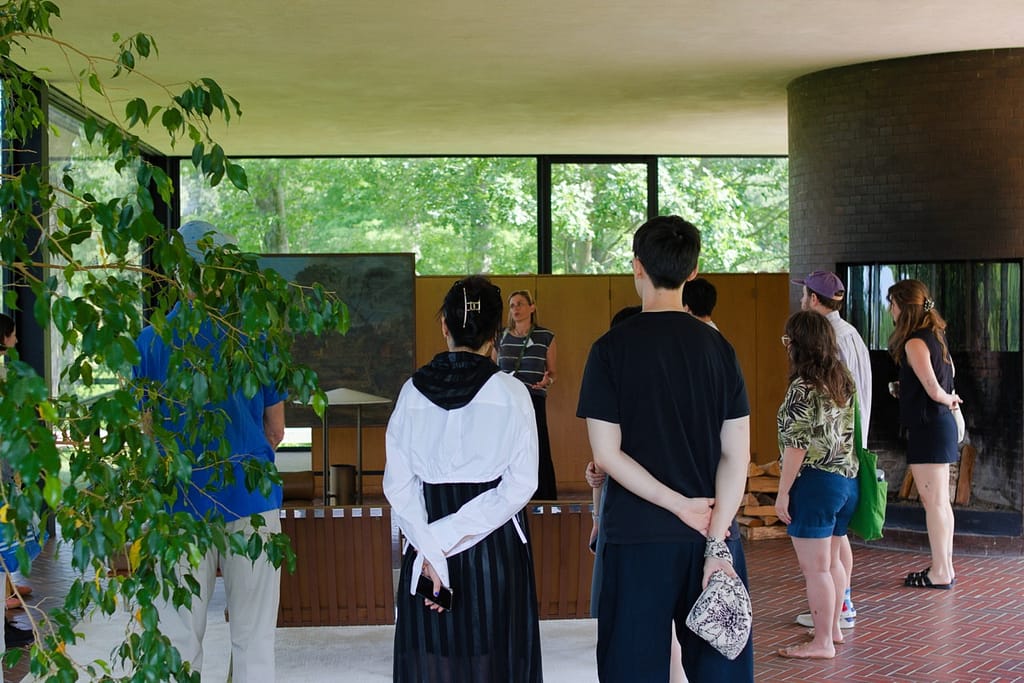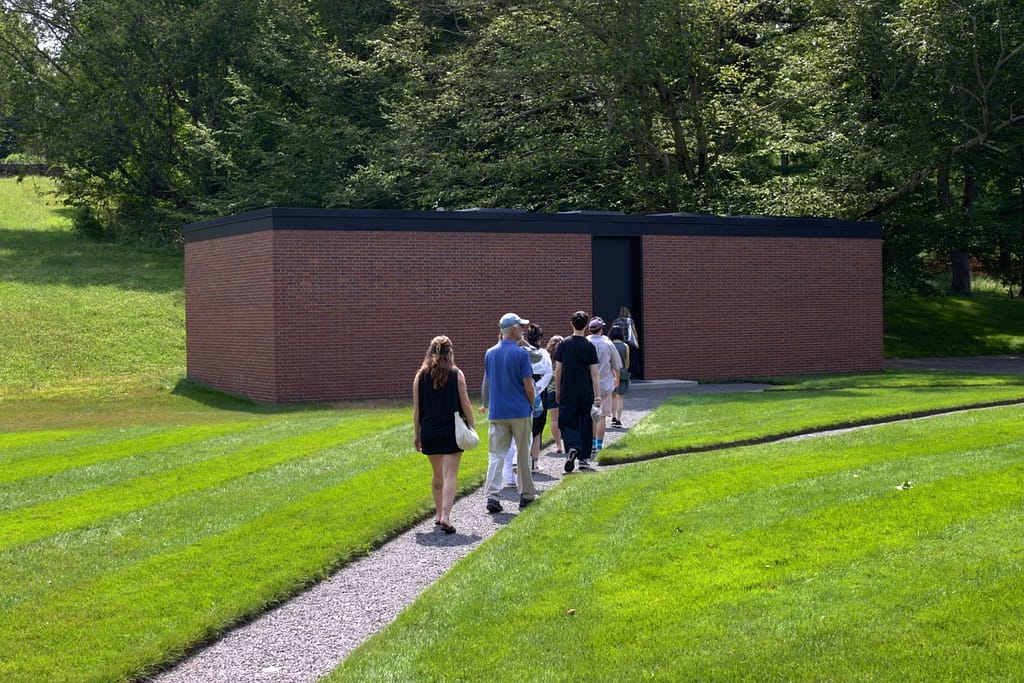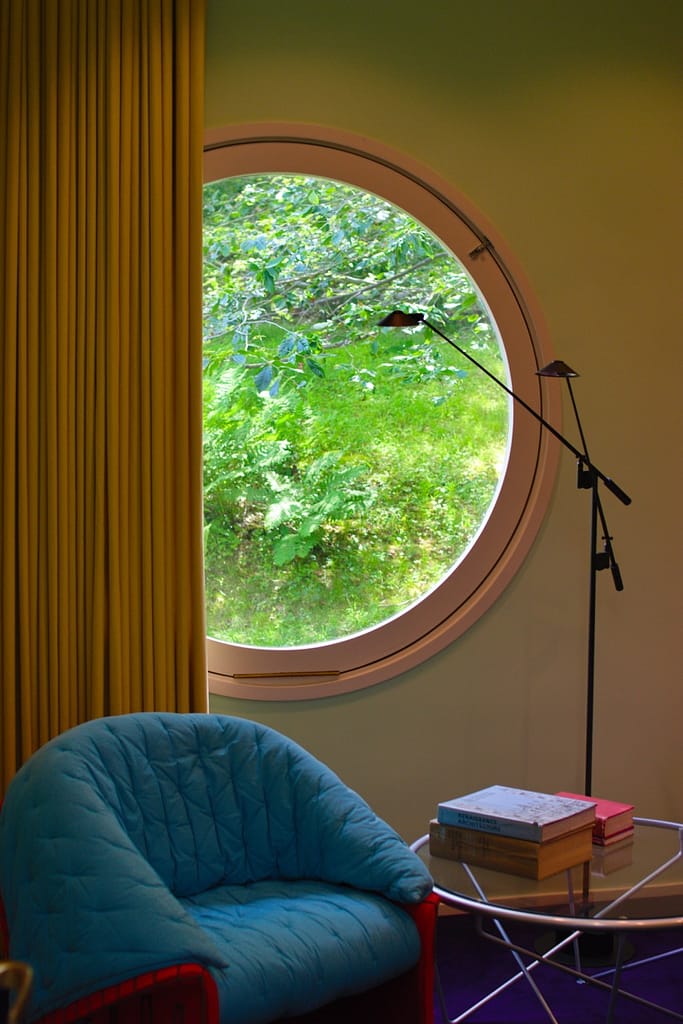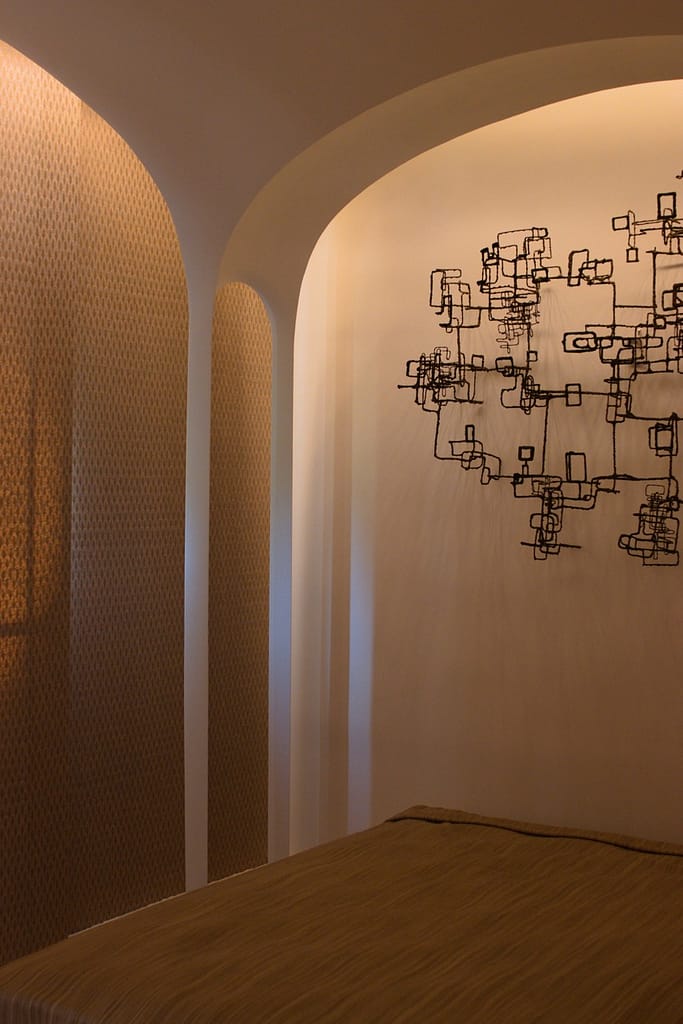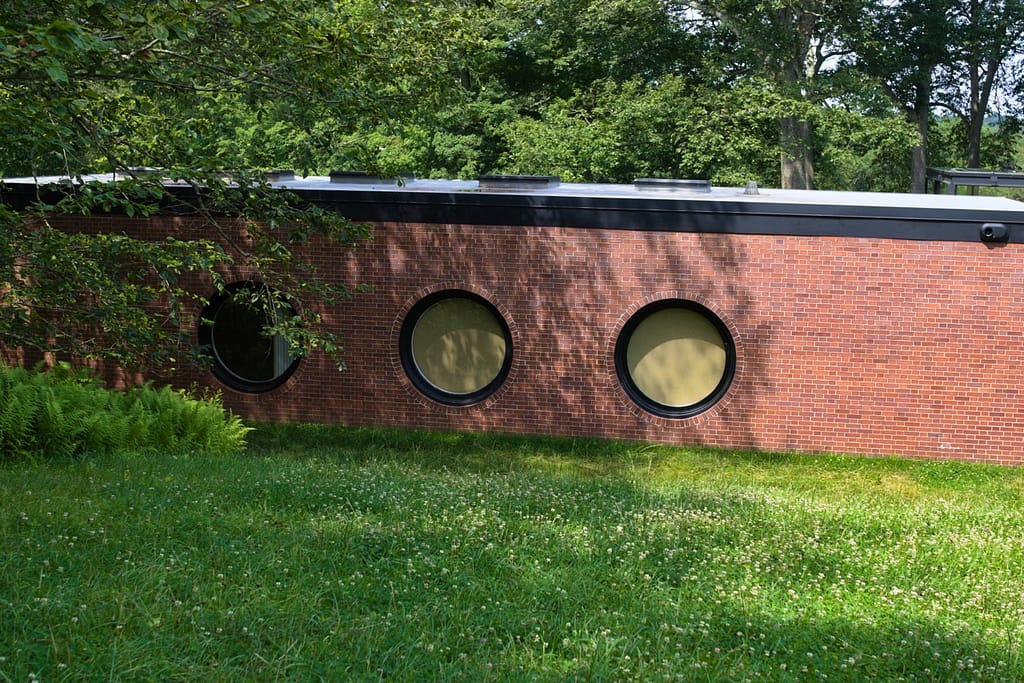Nestled in the wooded hills of New Canaan, Connecticut, Philip Johnson’s Glass House sits like an ancient Greek temple. Completed in 1949 as his personal home, this 56-by- 32-foot steel and glass structure erases the boundary between inside and outside, transforming the surrounding forest into a living wallpaper. It explores the dissolution of boundaries, transparency and openness.
The Glass House is a house without walls. It is a 1,815 square foot pavilion made almost entirely out of glass and steel, with just a touch of brick. The only enclosed structure is a cylindrical brick volume that extends beyond the roof and contains the bathroom and fireplace. Everything else is left open. A half-height wardrobe acts as a divider between the bed on one side and the living space on the other side. The living room is in the center, defined by a rug, two Barcelona chairs and a lounge chair. A free-standing painting rests on a simple easel; kind of like those moveable TV screens that you see now. In the back left corner from the entry is a dining table and the kitchen sits just to the left of the entrance.
Philip Johnson liked to host parties. I wonder if the space was as structured as it is today, divided into these invisible “rooms.” It must have been difficult to have a conversation during a party, the sound from our lone tour guide’s voice echoed through the space as she led us around. What would the space have felt like filled with guests and music?
Across the lawn sits the Brick House, the guest house. It is directly across from the Glass House on the same axis, but subtly off-center. This offset introduces a quiet tension between the two. The two buildings are in conversation, but not necessarily having the same one.
If the Glass House is about transparency, the Brick House is its opposite. While the Glass House is performative, the Brick House is closed off. It is clad entirely in brick. The only openings are three circular windows on the back, facing away from the Glass House. Surprisingly, the inside is highly ornamental, rich in color and extravagant. A mocha-clad marble bathroom made me feel like I had been transported to another time-period.
Together, the Glass House and its guest house balance each other. The Glass House is exposure and light, while the Brick House is solid, private, and opaque. They act like two halves of a whole, public and private, seen and unseen.
